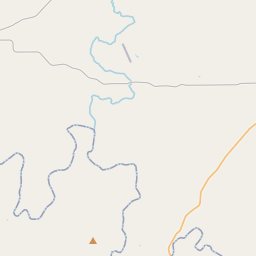First Methodist Church of Goldthwaite
Historical marker location:






Goldthwaite Methodists trace their history to the mid-1850s, when circuit-riding preachers began traveling to the area to minister to early permanent settlers. The pioneers gathered for services in private homes, out of doors, or in a one-room schoolhouse. For a time they were led by The Rev. H. Childress, who was known as the "bear-hunting preacher" because of the firearms he carried for protection while traveling. In 1885, the Santa Fe Railway founded the town of Goldthwaite. The town's railroad crew and passengers formed a ready market for goods and services, attracting new residents, who formed a local congregation of the Methodist Episcopal Church, South, that year. The Rev. C. V. Oswalt was the first pastor, and within two years the congregation completed its first church structure, a wood frame building. Since that time, the congregation has built several progressively larger church structures to accommodate its growth. Due to denominational mergers, the congregation changed its name to the First Methodist Church in 1939, and to the First United Methodist Church in 1968. Active in missionary and social service since its beginning, the First Methodist Church remains an important part of the religious life of this community
As one of the most visible programs of the Texas Historical Commission (THC), historical markers commemorate diverse topics in Texas history, including: the history and architecture of houses, commercial and public buildings, religious congregations, and military sites; events that changed the course of local and state history; and individuals who have made lasting contributions to the state, community organizations, and businesses.
Texas was once an independent country: After winning its independence from Mexico in 1836, Texas became its own country, known as the Republic of Texas. It existed as an independent nation for nine years before being annexed by the United States in 1845.
In 1854, Mills County was officially established by the Texas legislature and named after John T. Mills, a lawyer and soldier who fought in the Texas Revolution. The county's development was primarily driven by agriculture, with cotton becoming the dominant crop. The arrival of the railroad in the late 1800s further boosted the local economy, enabling the transportation of goods and facilitating trade.
With its rich soil and favorable climate, Mills County prospered throughout the late 19th and early 20th centuries. However, like many rural areas during this time, it faced challenges such as droughts, economic downturns, and the Great Depression. These hardships impacted the county's agricultural sector and led to a decline in population.
Despite these challenges, Mills County has maintained its unique character and close-knit community throughout the years. Today, it is known for its beautiful landscapes, historic sites, and outdoor recreational opportunities. The county continues to be influenced by its agricultural heritage while embracing the modern era, making it an interesting and dynamic place to live and visit.
Mills County Timeline
This timeline provides a glimpse into the major events and milestones that have shaped the history of Mills County, Texas.
- 1837 - Mills County is established and named after Texas Governor Branch Tanner Archer.
- 1849 - Gold is discovered in the county, leading to a short-lived gold rush.
- 1854 - Mills County becomes a part of the newly formed Brown County.
- 1876 - Mills County is reestablished as an independent county.
- 1880 - The county seat is established in Goldthwaite.
- 1920s - The oil industry has a significant impact on the local economy.
- 1947 - Mills County celebrates its centennial.
- 1965 - A severe flood causes significant damage to the county.
- 1990s - The county experiences economic growth due to an increase in tourism.
- 2018 - Mills County celebrates its 181st anniversary.